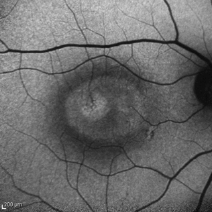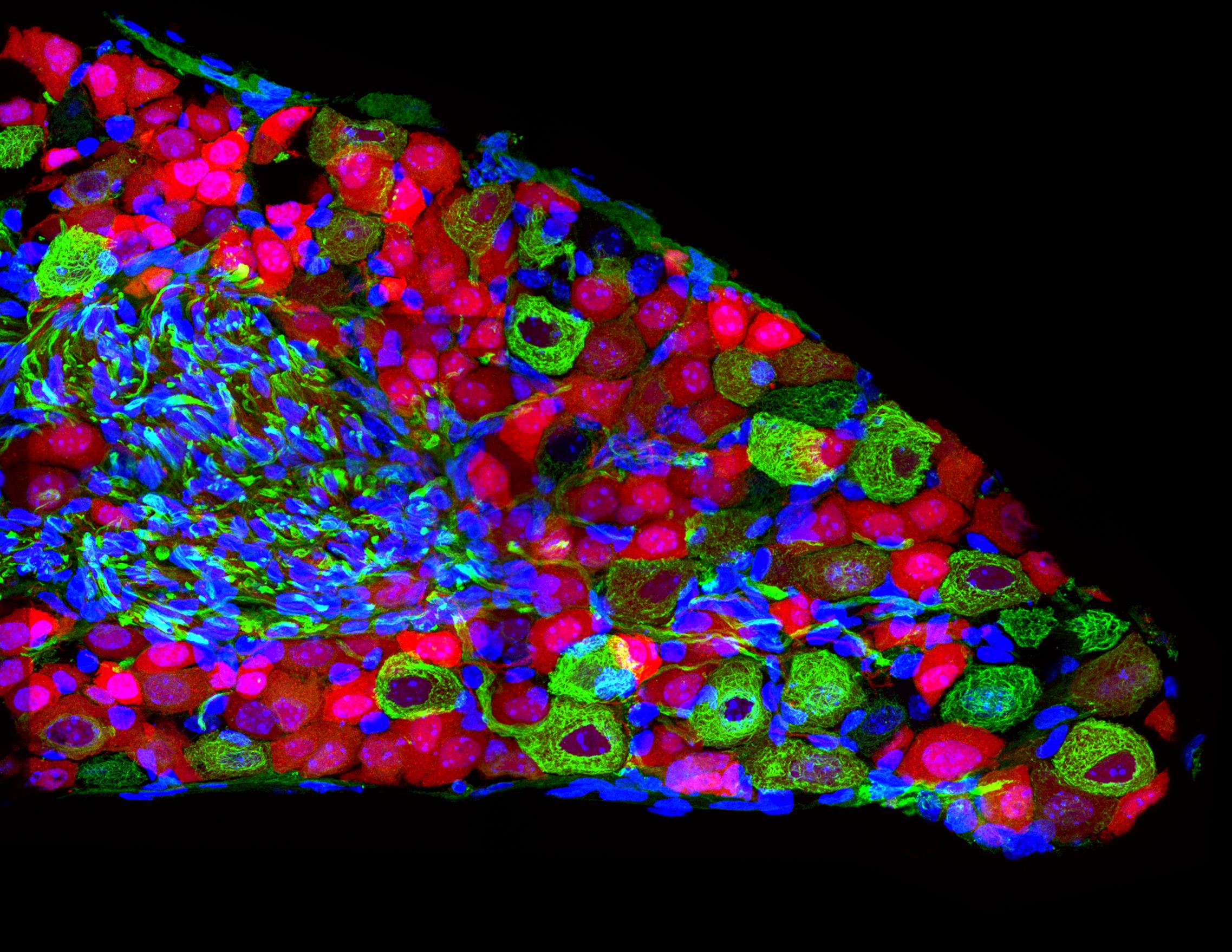
A ring of macular pigments is visible in this MacTel eye. An unaffected eye would have macular pigments in the entire circle.
Macular pigments are derived from a diet rich in fruits and vegetables. They are the pigments, known as carotenoids, which give carrots and sweet potatoes their vibrant color. Carotenoids are yellow, orange, and red lipophilic pigments that occur in plants, as well as some in bacteria and fungi. These naturally occurring compounds serve two important roles: they absorb light energy for photosynthesis and they provide protection from the damaging effects of that light energy.
The ability to absorb light and protect against light damage is important for the health and function of the human eye. There are over 600 carotenoids known in nature. People cannot synthesize carotenoids, and so they must get them from the food they eat. The human diet typically includes about 50 carotenoids, 20 of which are taken up by the gut and circulate in the blood. However, only two carotenoids are deposited in the macula. These carotenoids, lutein and zeaxanthin, along with its derivative mesozeaxanthin, are the macular pigments.
In the eye, carotenoids are concentrated in the central region of the retina, known as the macula. With its high density of cone photoreceptors, the macula is responsible for sharp vision. Macular pigments protect photoreceptors in the macula by absorbing damaging blue and near-ultraviolet light. Macular pigments are also powerful antioxidants. The central region of the retina is subject to a lot of stress. The damaging effects of light are combined with the retina’s high oxygen tension, which increases the chance of oxidative damage in the retina. Carotenoids can protect against both of these stresses.
In macular telangiectasia type 2, the retina has an abnormal distribution of macular pigments. The pigments are arranged in a ring around the macula, with the center of the ring devoid of macular pigments. This is one of the earliest manifestations of MacTel. The center of the ring is in the “MacTel zone,” or the region of the retina that is affected by the disease. The reasons for pigment redistribution or loss, and the significance of these changes, are still being investigated.
Studies show that macular pigments may prevent the development or progression of age-related macular degeneration (AMD), particularly in its more advanced forms. Macular pigments are important for maintaining the health of the eye and preserving vision. Researchers affiliated with the Lowy Medical Research Institute are studying carotenoids in MacTel, including why these protective pigments are specifically lost from the MacTel zone.


